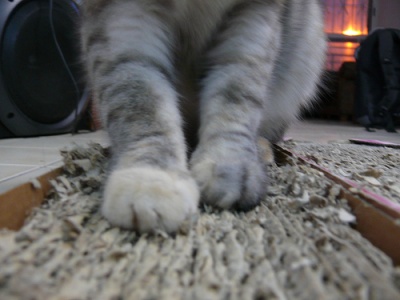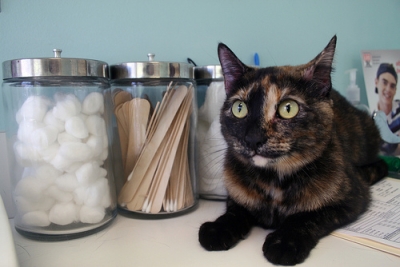
If you are thinking of declawing your cat, please take a moment to read this.
Declawing your cat is not a simple procedure, it is major surgery. Declawing removes the last joint of the cat’s paw as well as the claw itself. Believe it or not, declawing is common only in the United States and Canada. In other countries it may be illegal or almost impossible to find a vet who will perform the surgery. It is painful for the cat, physically and emotionally. And if your cat goes outdoors, he/she is rendered defenseless.
Alternatives to declawing are trimming your cat’s nails regularly and/or using scratching posts. You can train your cat to use the scratching post instead of your couch or other valuable items. Or you might consider re-homing your cat as perhaps it is not the right pet for you.
However, if the alternatives are to abandon or euthanize the cat, then I guess the answer for you is declawing. Consult with your vet to find out all the information you can and what to expect and care for after the surgery.
Procedures for declawing
Declawing is irreversible surgery performed under anesthesia by a veterinarian.
Cats have 3 bones in the toe, the claw grows from the last bone. Declawing requires amputation from the end of the last bone, removing the claw and preventing it from growing back. Each toe is either closed with sutures or surgical glue and bandaged snugly. Bandages are usually removed after 1-2 days.
Care of a declawed cat after surgery includes administering pain medication for 3-5 days, restricting activity, the cat being kept indoors until it is fully recovered. Litter should be non-granular, shredded newspaper is advisable. Even after the cat has recovered you may want to consider keeping her/him indoors as your cat has lost its main defense.
While most cats will walk very carefully 2-3 days post surgery, the feet will be tender and sore for a week or two. If you see swelling, a discharge from toes, bleeding, inappetence or any changes in health, contact your vet immediately.
Laser surgery is also used for declawing a cat. This surgery is also performed under anesthesia. Amputation of nails and bones is the same except done with a laser rather than a scalpel. The advantage of laser surgery is that the laser automatically seals blood vessels and cuts. There is less bleeding and less pain. However the cost of laser surgery is higher.
Another surgical procedure available is called Flexor Tendonectomy. The tendons that control claw extension are cut and part of them are removed under anesthesia. Care after this procedure is keeping the cat’s nails clipped. The cat has a limited capacity for sharpening and shedding claws since they can’t be extended or retracted.
If you decide to declaw your cat, it’s best done from 2-5 months of age. Older cats often experience prolonged and recurrent pain.
As noted above, please consider training your cat to use a scratching post. Try putting tape or plastic over areas where your cat may scratch. These may not be the best solutions for you, but they are for your cat.
Video



